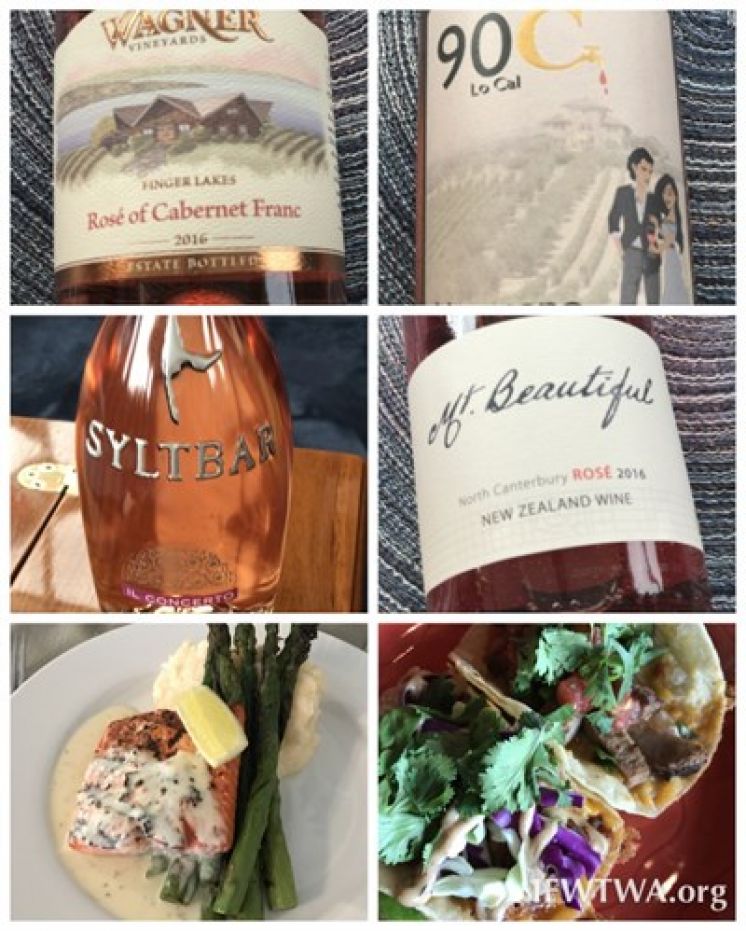Arepas with Venezuelan Chicken Salad
- Published in Blog
By Nicole Ruiz Hudson, Wine Spectator, June 29, 2017
"Stuff these simple, satisfying cornmeal cakes with a creamy chicken and apple salad, topped with cheese and avocado, and complemented by a Portuguese white.
Eight ingredients, plus pantry staples. That's all it takes to make an entire meal from scratch. Add in a good bottle of wine for less than $20, and you've got a treat for family or friends. That's the philosophy behind our "8 & $20" feature. We hope it adds pleasure to your table.
I have a soft spot for arepas.
My parents are both Venezuelan, so I grew up eating the cornmeal cakes common in Venezuela and Colombia. They’re a staple consumed at all hours of the day, whether at home, from street vendors, or at restaurants. Basically, they’re used like bread: served simply with a little cheese or butter, used to make sandwiches, or as an accompaniment for a sit-down family meal.
They're also remarkably easy to make. Arepas are made from a precooked white cornmeal called masarepa. (Note: Masarepa is not interchangeable with other types of cornmeal; masarepa is cooked before it is milled, yielding a finer, more flourlike consistency than regular cornmeal, which is milled raw.) And because they're corn-based, arepas are also gluten free.
Masarepa can be a little difficult to find in many parts of the country, but it's easily purchased online (P.A.N. and Goya are common brands). Simply mix it with water and salt to make a quick arepa dough, which can then be deep-fried or cooked on the stove and finished in the oven, as I’ve done here.
A popular Venezuelan sandwich is the reina pepiada, an arepa stuffed with chicken salad and avocado. The sandwich's name is a tribute to a former Miss World from Venezuela, and it loosely translates as “curvy queen.”
Every home or restaurant might have their own take on this chicken salad. My family’s version takes quite a long time to make, which means it’s not all that feasible for a weeknight. For this rendition, I tried to streamline it as much as possible while still retaining the flavor. To start with, I used a pre-cooked rotisserie chicken to keep things easy. If you’re making it from scratch, the traditional version uses poached chicken, but feel free to use any leftover chicken you have on hand.
Other common additions include boiled potatoes, onions, celery, lemon or lime juice, and red peppers—add any of the above and more, as you like. It’s also common to top the sandwiches with queso blanco (literally “white cheese”), or one of several other Venezuelan fresh cheeses. Alternatives include Mexican cotija, queso fresco, or even mozzarella or feta.
The arepas have a dense texture, and the chicken salad is creamy, but it also has a bright piquancy. A fresh white wine with some body seemed in order, so we opted to try a New Zealand Sauvignon Blanc and a Portuguese white blend from the Douro.
The Sauvignon Blanc offered plenty of bright citrus and tropical fruit notes, as well as some green pepper; it was juicy and refreshing and made a really solid match, but might have worked even better if the salad had included herbs, green chiles or peppers. The Douro blend had more rounded fruit notes of melon and ripe citrus. It was refreshing too, but also showed more minerality and textural complexity, which ultimately made it the favorite."
Pair with a well-rounded white blend like Casa Ferreirinha Douro White Planalto Reserva 2015 (88 points, $15) from Portugal, or try a New Zealand Sauvignon Blanc like Mt. Beautiful Sauvignon Blanc North Canterbury 2015 (89, $16).
Click here for this recipe!






















